Thermal Insulation to Combat Damp and Drafts

Two of the most common problems in homes, factories and business are related to damp and drafts, so having good thermal insulation is essential. In this article, we want to tell you more about the most effective insulation systems on the market today.
What is condensation?

The first thing you’ll need to keep in mind is that condensation is extremely common in buildings around the world. It occurs when water vapor in the air transforms into a liquid when it comes into contact with a cold surface.
This is exactly what happens when you take a bath or a shower, and you get out to find that the mirror is all fogged up and covered with water droplets.
When it occurs in our homes, condensation occurs when the temperature inside is higher than the temperature outside, especially during winter. It usually appears on windows, ceilings, and walls.
A good way to identify condensation is to watch for steam or water droplets on the glass of your windows. However, you may also see black mold spots on the ceiling or in the corners of the room. In more severe cases, you may also notice a strong musty smell when you enter the room.
But what causes condensation in the first place? There are a few different causes, including drying clothes inside, setting the heating too high in winter, not ventilating the bathroom after showering (especially if you don’t have a window), cooking with uncovered pots, and drying wet clothes on radiators.
Thermal insulation – types
1. External wall insulation with a ventilated facade
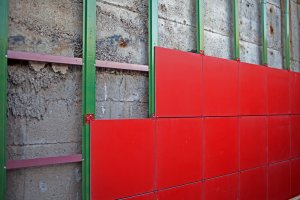
A layer of insulation made from a metal structure is fixed to the walls. This is often rigid insulation, made up of mineral wool. It reduces thermal bridges, eliminates the problem of damp, and protects the sides of your house against adverse weather conditions.
2. Wall cavity thermal insulation
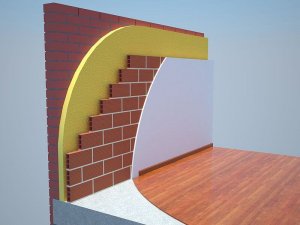
If you can’t or don’t want to renovate the walls of your home, one option is to inject polyurethane foam. You also have the option of using mineral wool or cellulose instead of polyurethane.
All these materials are great insulators and are injected into the wall cavity to protect the inside of the building. The downside is there’s no guarantee that the insulation will be uniform, and you’ll need to repair any imperfections in the walls first.
3. Polyurethane waterproofing membrane
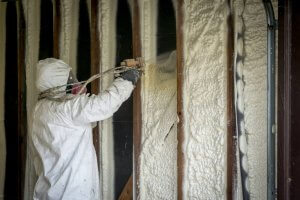
This insulation system is used for roofs. It’s waterproof, non-asphalt, thick, and extremely adhesive. It helps prevent water vapor and temperature fluctuations.
4. Roof waterproofing
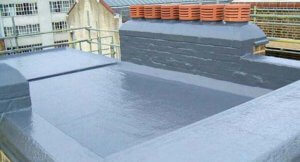
This is another great solution for roofs. Made up of a water-based liquid membrane, this type of insulation has two main purposes – to prevent leaks, and eliminate condensation. Plus, it also helps prevent heat loss from inside the house.
Can thermal insulation help prevent condensation?
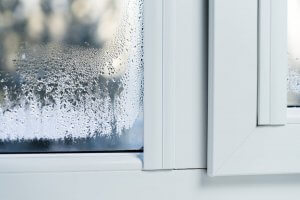
In theory, yes. However, there’s no guarantee that thermal insulation will prevent damp, or prevent steam from turning into condensation in certain areas of the house. In addition, one of the reasons why people don’t see good results is because they refuse to change bad habits, and don’t properly ventilate their home.
If you’re going to build a house or renovate a room, we recommend that you choose cellulose insulation, cork, or sheep’s wool so that the roof is well-insulated.
For your home to have maximum energy efficiency, you need to thermally insulate and ventilate it properly. This means that, even in winter, leaving the window open slightly will prevent condensation. Avoid drying clothes inside the house or turning the heating on high on cold days. It’s better to wrap up more, putting on two pairs of socks or an extra blanket on the bed.
Two of the most common problems in homes, factories and business are related to damp and drafts, so having good thermal insulation is essential. In this article, we want to tell you more about the most effective insulation systems on the market today.
What is condensation?

The first thing you’ll need to keep in mind is that condensation is extremely common in buildings around the world. It occurs when water vapor in the air transforms into a liquid when it comes into contact with a cold surface.
This is exactly what happens when you take a bath or a shower, and you get out to find that the mirror is all fogged up and covered with water droplets.
When it occurs in our homes, condensation occurs when the temperature inside is higher than the temperature outside, especially during winter. It usually appears on windows, ceilings, and walls.
A good way to identify condensation is to watch for steam or water droplets on the glass of your windows. However, you may also see black mold spots on the ceiling or in the corners of the room. In more severe cases, you may also notice a strong musty smell when you enter the room.
But what causes condensation in the first place? There are a few different causes, including drying clothes inside, setting the heating too high in winter, not ventilating the bathroom after showering (especially if you don’t have a window), cooking with uncovered pots, and drying wet clothes on radiators.
Thermal insulation – types
1. External wall insulation with a ventilated facade

A layer of insulation made from a metal structure is fixed to the walls. This is often rigid insulation, made up of mineral wool. It reduces thermal bridges, eliminates the problem of damp, and protects the sides of your house against adverse weather conditions.
2. Wall cavity thermal insulation

If you can’t or don’t want to renovate the walls of your home, one option is to inject polyurethane foam. You also have the option of using mineral wool or cellulose instead of polyurethane.
All these materials are great insulators and are injected into the wall cavity to protect the inside of the building. The downside is there’s no guarantee that the insulation will be uniform, and you’ll need to repair any imperfections in the walls first.
3. Polyurethane waterproofing membrane

This insulation system is used for roofs. It’s waterproof, non-asphalt, thick, and extremely adhesive. It helps prevent water vapor and temperature fluctuations.
4. Roof waterproofing

This is another great solution for roofs. Made up of a water-based liquid membrane, this type of insulation has two main purposes – to prevent leaks, and eliminate condensation. Plus, it also helps prevent heat loss from inside the house.
Can thermal insulation help prevent condensation?

In theory, yes. However, there’s no guarantee that thermal insulation will prevent damp, or prevent steam from turning into condensation in certain areas of the house. In addition, one of the reasons why people don’t see good results is because they refuse to change bad habits, and don’t properly ventilate their home.
If you’re going to build a house or renovate a room, we recommend that you choose cellulose insulation, cork, or sheep’s wool so that the roof is well-insulated.
For your home to have maximum energy efficiency, you need to thermally insulate and ventilate it properly. This means that, even in winter, leaving the window open slightly will prevent condensation. Avoid drying clothes inside the house or turning the heating on high on cold days. It’s better to wrap up more, putting on two pairs of socks or an extra blanket on the bed.
All cited sources were thoroughly reviewed by our team to ensure their quality, reliability, currency, and validity. The bibliography of this article was considered reliable and of academic or scientific accuracy.
Martínez, P., Sarmiento, P., & Urquieta, W. (2005). Evaluación de la humedad por condensación dentro de viviendas sociales. Revista INVI.







